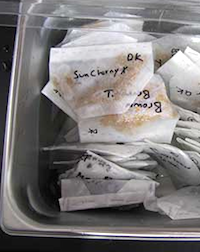It has been in the news, of course, about the severity of the 2013/2014 winter with record breaking low temperatures and higher than normal snow amounts in many locations. So how does all this translate to crop insect pests? As an article that I read last week said, “It’s complicated”.
There are many factors that affect insect mortality through the winter months. It is not only just the cold, but the amount of snow cover, overall fitness of the insects going into the winter diapause (hibernation), how well protected were they from the cold, what the weather conditions are coming out of winter, and so on.
What to Expect
Local native insects are much more likely to survive the winter than southern migratory insects. [Read more…]

